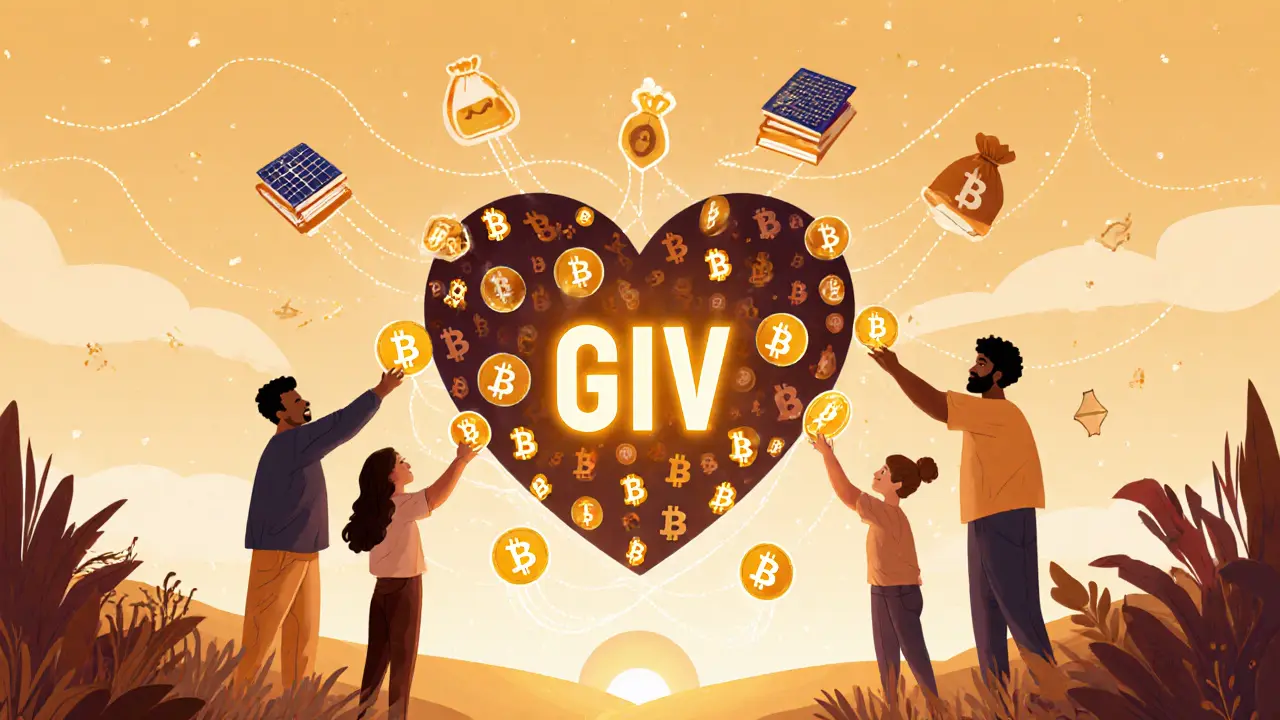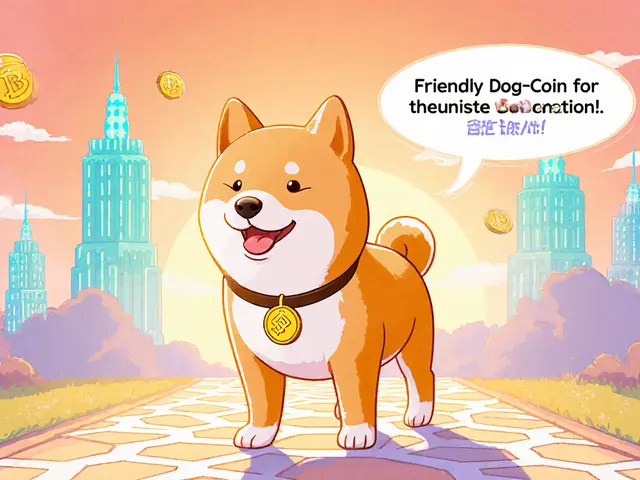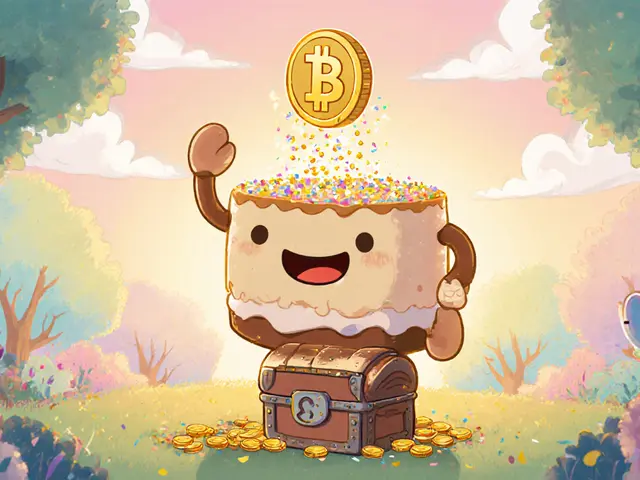
Most people think of cryptocurrency as a way to make money - trade, speculate, or store value. But what if crypto could be used to do good? That’s where Giveth comes in. Giveth isn’t just another coin. It’s a platform built to make charitable giving transparent, fee-free, and powered by blockchain technology. If you’ve ever wondered where your donation went after clicking ‘Donate’ on a charity site, Giveth offers a different answer: every dollar - or rather, every ETH or GIV - is tracked forever on the blockchain.
What Exactly Is Giveth?
Giveth is a decentralized platform that lets anyone give crypto donations directly to verified social impact projects. The native token, GIV, isn’t just a currency - it’s a tool for rewarding generosity. Launched on December 16, 2021, the project was built by a global group of developers and activists who wanted to fix broken systems in traditional philanthropy. No middlemen. No hidden fees. No vague reports saying “your donation helped.” Instead, donors see exactly how funds are used, down to the transaction.At its core, Giveth runs on Ethereum and its Layer 2 solution, Optimism. This means transactions are faster and cheaper than on the main Ethereum network. The GIV token is an ERC-20 token with 18 decimal places, making it easy to divide and use in small amounts. The contract address for Ethereum is 0x900db999074d9277c5da2a43f252d74366230da0, and on Optimism, it’s 0x528cdc92eab044e1e39fe43b9514bfdab4412b98. You can check any donation live on Etherscan or Optimistic Etherscan.
How Does Giveth Work?
Giveth has three main parts that work together:- Donation Interface - Anyone with a crypto wallet (like MetaMask) can send ETH, USDC, or GIV to a project. No sign-up. No credit card. Just paste the project’s wallet address and hit send.
- Project Creation Tools - Nonprofits, open-source teams, or even individuals can apply to list their cause. Once verified, they get a public page showing real-time donations, updates, and how funds are spent.
- GIVbacks Rewards - This is the unique part. When you donate to a project, you earn GIV tokens in return. The more you give, the more you get back. It’s not a reward for spending - it’s a reward for giving. This system encourages repeat donations and builds community loyalty.
Unlike traditional platforms like GoFundMe or PayPal Giving Fund, Giveth charges zero fees. That means 100% of your donation goes to the project. Traditional processors take 2.9% + $0.30 per transaction. On Giveth, even if you donate $100, the full $100 reaches the cause.
Real Impact: Numbers That Matter
As of late 2023, Giveth has facilitated over 6,578 verified projects. These aren’t just random ideas - they’ve been reviewed by the community for legitimacy. Projects range from open-source software development to environmental cleanup, animal shelters, and education initiatives in developing countries.The Giveth Matching Pool has raised over $425,000 from 3,674 donors. The Giveth Community of Makers - a group focused on building tools for the platform - raised nearly $47,000 from 324 contributors. These aren’t theoretical numbers. You can click on any project and see who donated, when, and how the funds were spent.
One user on Reddit summed it up: “I donated 0.1 ETH to a project building free coding tools for kids. Two weeks later, I got a video update showing the laptops they bought and the teachers they hired. I’ve never had that kind of clarity with any charity before.”
GIV Token: Purpose, Supply, and Value
The GIV token has a maximum supply of about 147 million. But here’s the twist: as of late 2023, the circulating supply was reported at over 271 million on some platforms. This isn’t an error - it’s because of token migrations and reissuances during upgrades. The supply is intentionally flexible to support rewards and community growth.GIV isn’t meant to be a speculative asset. It’s designed to be used - earned through donations, spent on platform services, or staked to help govern the network. Its value isn’t driven by hype or whale trading. Instead, it’s tied to real activity: how many people are donating, how many projects are active, and how much community trust exists.
Market data varies. CoinMarketCap lists GIV around #2339 by market cap. CoinGecko puts it at #7163. That’s small compared to Bitcoin or even Ethereum. The 24-hour trading volume hovers around $8,800 - tiny compared to giants like Gitcoin, which sees over $1 million daily. That means liquidity is low. If you buy GIV, you might struggle to sell it quickly without moving the price.

How Is Giveth Different From Other Crypto Philanthropy Platforms?
There are other crypto-for-good platforms, but Giveth stands out in key ways:| Feature | Giveth | Gitcoin | The Giving Block | GoFundMe |
|---|---|---|---|---|
| Primary Focus | General charitable giving | Open-source software | Crypto donations to traditional nonprofits | Fiat-based crowdfunding |
| Native Token | GIV (rewards donors) | GIT (used for quadratic funding) | None | None |
| Transaction Fees | 0% | 0% (on-chain) | 2.9% + $0.30 | 2.9% + $0.30 |
| Transparency | Blockchain-tracked donations | Blockchain-tracked | Traditional reporting | Traditional reporting |
| Donor Incentives | GIVbacks rewards | Quadratic funding matching | None | None |
| Best For | Donors who want to see impact + earn rewards | Funding devs and open-source tools | Nonprofits wanting crypto donations | Personal fundraising |
Gitcoin is great for funding open-source code, but it doesn’t help a local food bank. The Giving Block lets nonprofits accept crypto, but it doesn’t give donors a token reward. GoFundMe is simple, but you have no idea if your $20 actually bought medicine or just paid for marketing. Giveth fills a gap: it’s for people who want to give, see proof, and be rewarded - all without paying fees.
Who Uses Giveth?
Most users are crypto-native. According to Giveth’s own 2023 survey, 78% of donors already use crypto regularly. Another 15% are nonprofits that work in the blockchain space. Only 7% are traditional charities - the kind that still use paper forms and bank wires.This is the biggest challenge. Many nonprofits don’t know how to use MetaMask. They don’t understand gas fees. They worry about price swings. If you donate in ETH and the price drops before the nonprofit converts it to USD, they lose money. That’s why Giveth is working on integrating USDC (a stablecoin pegged to the dollar) and building a simple widget that lets websites accept crypto donations without users needing a wallet.
Still, early adopters are seeing results. A nonprofit in Kenya used Giveth to fund solar panels for a school. Donors got updates with photos, receipts, and GPS coordinates of the installed panels. One donor said, “I didn’t just give money. I helped power a classroom.”
Challenges and Criticisms
Giveth isn’t perfect. Critics point to a few issues:- Low Liquidity - With only 7 exchanges listing GIV, selling your tokens isn’t easy. You might need to use a decentralized exchange like Uniswap.
- Complex Onboarding - Nonprofits struggle with wallet setup. The platform has 87 pages of documentation, but that’s overwhelming for someone who’s never used crypto.
- Mobile Wallet Issues - About 12 open GitHub issues are about wallet connections failing on phones. If you’re on Android or iOS, you might get stuck.
- Tokenomics Debate - Some analysts argue that flooding the market with GIV tokens (due to the higher circulating supply) weakens the incentive to donate. Others say it’s intentional - to grow the community fast.
There’s also the “not your keys, not your coins” problem. One project creator lost $8,000 in donations because they used a custodial wallet instead of a self-custody one. Giveth’s team now pushes hard for Gnosis Safe wallets for organizations - multi-signature wallets that require multiple approvals to move funds.

What’s Next for Giveth?
The roadmap is clear:- December 2023 - Integration with Circle’s USDC for stablecoin donations.
- Q1 2024 - Launch on Polygon network to cut fees even further.
- Q2 2024 - A simple widget for traditional websites to accept crypto donations without users needing wallets.
- Ongoing - Improving mobile UX and adding fiat on-ramps (buy crypto with a credit card directly on Giveth).
These aren’t just tech upgrades. They’re bridge-building efforts. Giveth isn’t trying to replace traditional charities. It’s trying to make them better - by giving donors control, transparency, and a real reason to give again.
How to Get Started
If you want to try Giveth, here’s how:- Get a crypto wallet - MetaMask is the easiest. Install the browser extension or mobile app.
- Buy ETH or USDC from an exchange like Coinbase or Kraken.
- Go to giveth.io and connect your wallet.
- Browse projects. Look for ones with “Verified” badges.
- Donate. You’ll automatically earn GIVbacks.
- Check your donation on the blockchain using Etherscan.
Pro tip: Start small. Donate 0.01 ETH to a project you care about. See how it works. If you like it, give more. The rewards add up.
For nonprofits: Apply to list your project on Giveth. You’ll need your wallet address, a clear mission statement, and proof of legal status. The review process takes 2-5 days. Once approved, you’ll get a public page and access to the matching pool.
Final Thoughts
Giveth isn’t about getting rich. It’s about giving better. In a world where trust in charities is low, Giveth offers something rare: proof. You don’t have to take anyone’s word for it. You can see every donation. Every update. Every outcome.It’s not the biggest crypto project. It won’t make you a millionaire. But if you care about making a real difference - and you believe technology should serve people, not just profits - then Giveth is one of the most meaningful things happening in crypto today.
Is GIV a good investment?
GIV isn’t designed as an investment. Its value comes from usage - donating, earning rewards, and supporting projects. The token supply is large and trading volume is low, so price swings are common. Don’t buy GIV hoping to flip it. Buy it if you want to give and be rewarded for it.
Can I donate fiat currency to Giveth?
Not directly yet. Giveth only accepts crypto - ETH, USDC, or GIV. But the platform is building a widget that will let websites accept crypto donations using credit cards. That will let non-crypto users give easily. The feature is expected in Q2 2024.
How do I get GIV tokens?
You earn GIV by donating to verified projects on the platform. The more you give, the more you get back through the GIVbacks system. You can also buy GIV on exchanges like Uniswap, KuCoin, or Gate.io - but be aware of low liquidity and price volatility.
Are Giveth donations tax-deductible?
It depends on your country and the project. Most Giveth projects are not registered nonprofits in the US or EU, so donations aren’t automatically tax-deductible. Some projects may be 501(c)(3) equivalents - check their profile page. Always consult a tax professional before assuming deductions.
Is Giveth safe to use?
The platform’s smart contracts have been audited and are open-source. But safety depends on you. Never share your private keys. Use a wallet you control (like MetaMask). Avoid custodial wallets for project funds. Always double-check contract addresses before sending funds. The blockchain is permanent - mistakes can’t be undone.
Can nonprofits outside the crypto world use Giveth?
Yes, but it’s harder. Nonprofits need to learn how to use crypto wallets and understand blockchain basics. Giveth offers guides and support, but the learning curve is steep. Many traditional nonprofits still prefer platforms like The Giving Block that handle crypto-to-fiat conversion for them. Giveth is working to make this easier with upcoming fiat on-ramps.
1 Comments
Write a comment
More Articles

How Venezuela Uses Crypto to Bypass Sanctions
Venezuela uses cryptocurrency - especially USDT and Bitcoin - to bypass U.S. and EU sanctions, turning crypto into a lifeline for citizens and a weapon for the regime. Oil sales, OTC brokers, and state-run exchanges fuel a hidden economy that global sanctions struggle to stop.


Missy Simpson
November 6, 2025 AT 13:29OMG this is so cool!! I just donated 0.02 ETH to a kids coding project and got GIV back instantly 😍 I’ve never felt this connected to a charity before. Like, I actually know where my money went. Thank you for sharing this!!